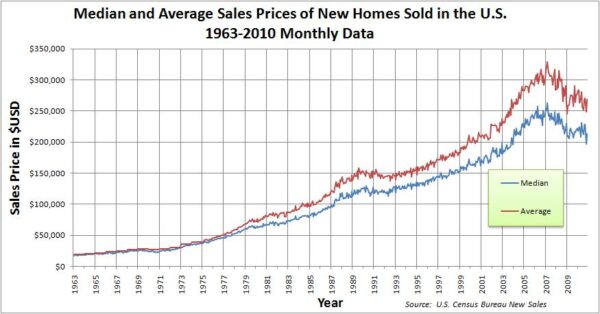Economy
Urbanisation is only evil when we forget our duty to the environment
Emily Harper looks at the billion dollar problems, solutions and reality when it comes to the apparent face-off between sustainability and urbanisation.
Food and shelter. These are the two most primordial needs of mankind and while progress has been made from living in dark caves to houses designed like renaissance museums, the challenge of sustainability without exhausting the world’s resources has never been fully realised until now. With the rapid urbanisation of once simple villages at an all-time high, we can no longer afford to stand watch as our society is riddled with the irony of high-rise structures and the exponential increase of food shortage.
There is nothing inherently wrong with having a house modelled after the Versailles, but when we scale that up to 6 billion people wanting the same dream, then it no longer becomes practical for the planet. As they say it, at Blue & Green Tomorrow, there is no plan(et) B.
The billion dollar problem
Necessity is the mother of all inventions, and in this day and age what bigger problem is there than needing a humble abode within arm’s reach of everything? Who wouldn’t want to live in a home that’s just a walk away from work, school, the business districts and any commodity that is considered a necessity to the 21st century man? To make the most of our planet’s scarce real estate, the rise of condominiums and buildings in key cities became the golden answer everyone was looking for – or was it?
Our race has been in the pursuit of creating architectural wonders –albeit in the face of construction and engineering nightmares. But despite all these advancements and the endless navigation of government bureaucracies in establishing proper building codes, architectural technology for sustainability is still but a dream. It’s easy to blame the construction firms for not pushing the envelope further enough, but can we really blame them when inflation always seems to catch up with the industry?
It’s surprising to know that even the real estate market in the US was still pretty high during the recession.
 As soon as the demand for housing was met, a new one presented itself in the form of a question: “Is this sustainable?” Whilst we found a quick solution to urban living in the form of mid-rise and high-rise towers, we were doing this at the expense of much needed land for agriculture.
As soon as the demand for housing was met, a new one presented itself in the form of a question: “Is this sustainable?” Whilst we found a quick solution to urban living in the form of mid-rise and high-rise towers, we were doing this at the expense of much needed land for agriculture.
One of the most basic issues being tackled at every humanitarian convention is addressing food sustainability and finding a way to end hunger. The western world, particularly the US, well-known for being the Land of Excess, has yet to share its deepest secrets in food commercialisation.
Several institutions have put forth radical ideas to exponentially increasing food production on a grassroots level but it begs to wonder why we know so little about it? The world has been witness to three unnecessary wars in the past decade and trillions of dollars went along with it, and we have yet to hear from our world leaders a united solution to addressing the world’s food problem. Conspiracy theorists could tell you all sorts of outrageous stories from their investigations, but I’ll leave that up to you to decide.
It is now 2014 and it’s still baffling how our most primordial needs still haven’t been addressed at the most basic level, how to achieve a complete balance between the two.
It’s quite vexing that we are only efficient in finding an elegant solution to either one of these problems and not both.
The billion dollar solution
More than ever before, the world desperately needs to come to an agreement in finding a solution that will provide adequate food and housing to its citizens without exhausting our limited resources. I won’t claim to know the answers when it comes to solving the world’s basic problems but I believe in the marriage of urbanity and sustainability –despite the article’s initial contradiction.
Arcology, a portmanteau of ‘architecture’ and ‘ecology’ are architectural principles where it addresses the issue of creating enormous habitats with a high human population density in mind, with little to no environmental impacts.
An example of this would be Shimizu’s Try 2004 Project. Whilst we’re still millennia away from sustainable megacities like these, it’s comforting to know that several companies are finally starting to religiously adopt these principles.
A dream project like that will probably happen long after we’re dead but we shouldn’t be too distressed as we can still participate in our own little ways by making a good investment in companies where urbanisation and sustainability are at the top of their core values. I wouldn’t go as far as urging readers to create a campaign protest to make sure all these firms follow suit in Shimizu, but if we can find some time to check out the local firms in our city, we could probably tell our friends who are opting to buy some properties on which ones are best to live in.
When it comes to addressing the food problem, one of the feasible and probably easiest solutions to these are fast growing crops. Wheat, corn and potatoes are some of the most easily produced crops anywhere in the world. Now if only the world could divert some of its misused funds to providing farmers with enough seeds, I believe we can all agree – even without any statistical data – that this could solve up to 80% of the world’s food shortage. Imagine ending the hunger of millions of children in Africa even for a single week!
“An apple a day, keeps the doctor away” is something we always heard throughout our childhood and who would’ve have thought that apple trees can also be a solution to ending world hunger? It may take at least three years for a dwarf apple tree to start yielding any fruits but after five years it should be enough to provide a family of five every year onward and will most likely outlive you and your children – talk about sustainability!
The billion dollar reality
It’s ironic to know that the leading countries in sustainable projects are those in the oil rich fields of the Middle East. Abu Dhabi is best known for its skyscrapers but it’s also the leader in dreaming of a world where fossil fuels isn’t the leading source of our environment’s destruction – ironic is it not that Mother Nature herself gave us the means of destroying her? Go check out Masdar City and it will blow your mind.
Paolo Soleri, the man responsible for coining the term ‘arcology’, created Arcosanti as his brainchild project in the Arizona desert. Although he recently passed away in 2013, his legacy has been passed down in his organisation which currently serves as the premier learning institutions exploring arcological designs.
And then there’s China, Asia’s dragon when it comes to vested interests in taking the status quo of being the world leader in engineering wonders. The destruction of centuries old rainforests, archaeological and cultural sites, and the displacement of at least 1.3 million people wasn’t enough to deter them from building the Three Gorges Dam. Although urbanisation wasn’t the main reason for its construction, it inevitably resulted in the creation of mini cities that are nowhere near to the design principles of arcology.
The urbanisation in India is both a problem and a solution of some sorts. The former is due to the low level of quality of life in several parts of its cities, particularly in Mumbai where 13 million people are living in an area of 233 sq miles. Imagine a city half the size of Los Angeles with 3.5 times more people. Whilst it may sound uncomfortable to live in, it has also become a solution to India’s growth in the private sector after it gained its independence.
And let’s not forget the rest of Asia where a manic demand for condo units keeps rising and the governments are at a loss on how to regulate this rapid expansion. Stricter building codes aren’t enough to deter the most ambitious corporations from creating megacities as this only drives their inner ingenuity to create more luxurious homes for the average person.
When it comes to food production, only a handful of corporations have fully embraced producing organic crops since genetically modified variants are more cheaper to produce and thus, more easily available to the general public. One way of supporting these companies that are ‘taking the higher path’ is by purchasing their goods whenever our wallet allows us.
According to a report made by the UN with United Cities and Local Governments (UCLG), “Urbanisation will be the defining trend over the next several decades, especially in East Asia, South Asia, and sub-Saharan Africa, where the bulk of extreme poverty is concentrated.” Coincidentally, these regions are also where the most basic food crops can easily grow but is sadly lacking when it comes to production.
This now leaves us with a question of whether we, as a human race, are up to the task of continuing the gears of change for the preservation of our one and only planet. Urbanisation in itself is not evil, as long as we don’t forget our duty to our environment. Self-preservation was the main reason why our ancestors moved out of their dark caves and ventured out into the vast open plains of this world; and now it is our turn in cultivating a paradigm shift where urbanity isn’t in conflict with sustainability.
Emily Harper is a woman of change. There’s not much that scares her than humanity.
Further reading:
A Confucian approach to town planning will create places that last
Green spaces in cities positively affect mental health
Existing city infrastructure can be ‘reprogrammed’
Green versus grey infrastructure
Thriving, livable and green, Melbourne walks the talk as a sustainable city


 Environment10 months ago
Environment10 months agoAre Polymer Banknotes: an Eco-Friendly Trend or a Groundswell?

 Environment12 months ago
Environment12 months agoEco-Friendly Home Improvements: Top 7 Upgrades for 2025

 Features9 months ago
Features9 months agoEco-Friendly Cryptocurrencies: Sustainable Investment Choices

 Features10 months ago
Features10 months agoEco-Friendly Crypto Traders Must Find the Right Exchange




























